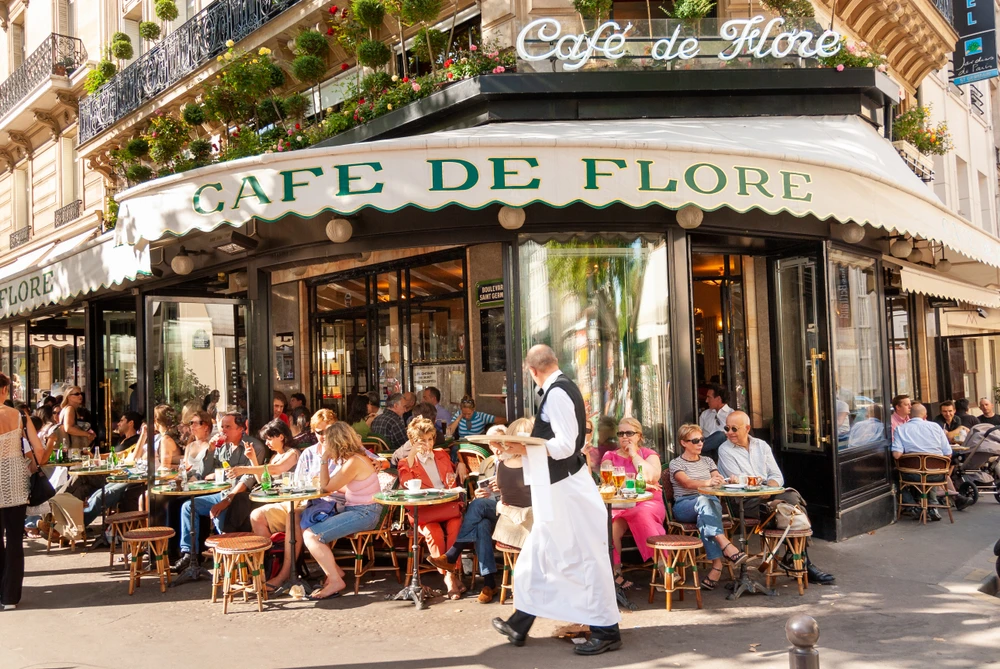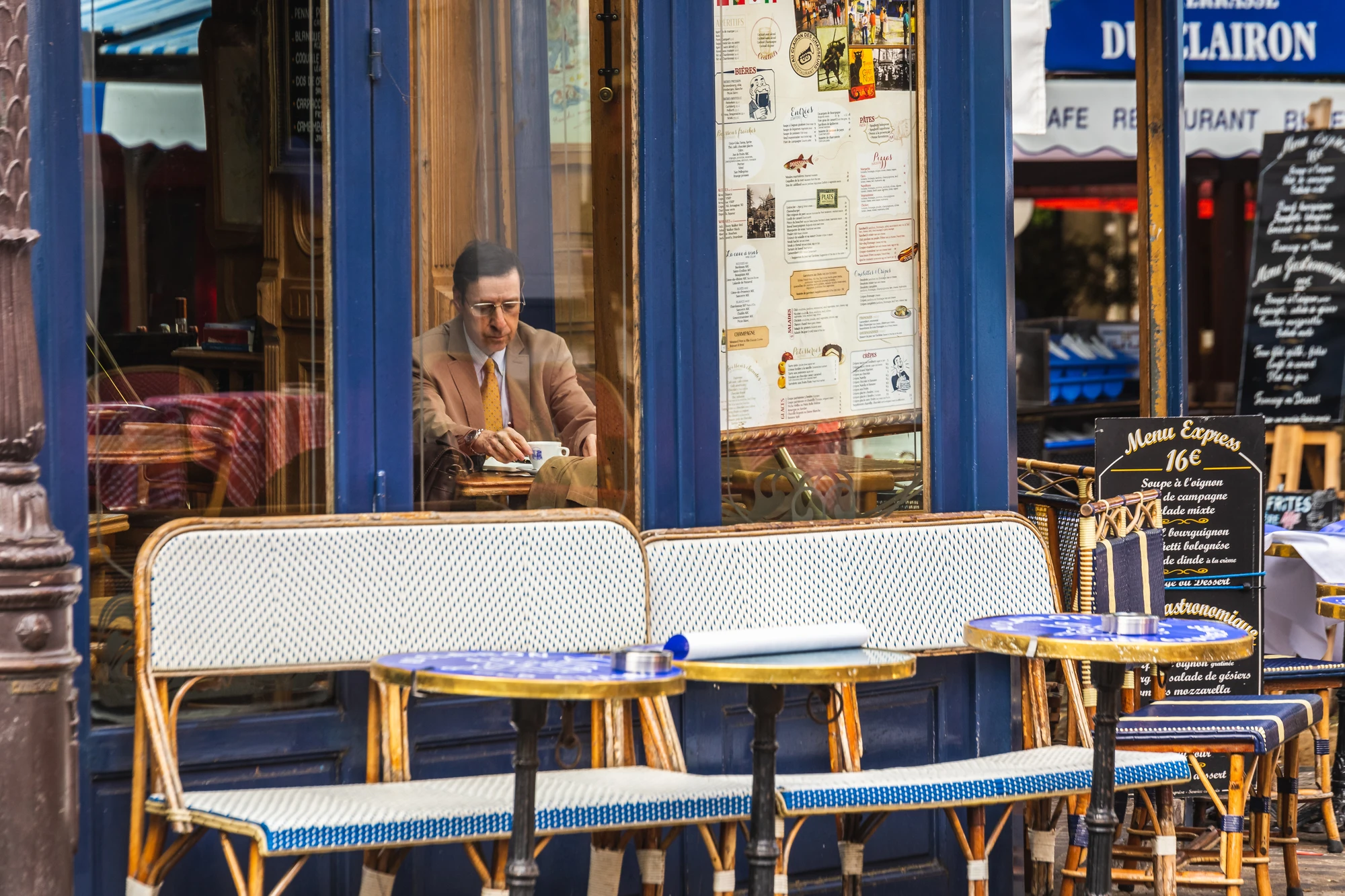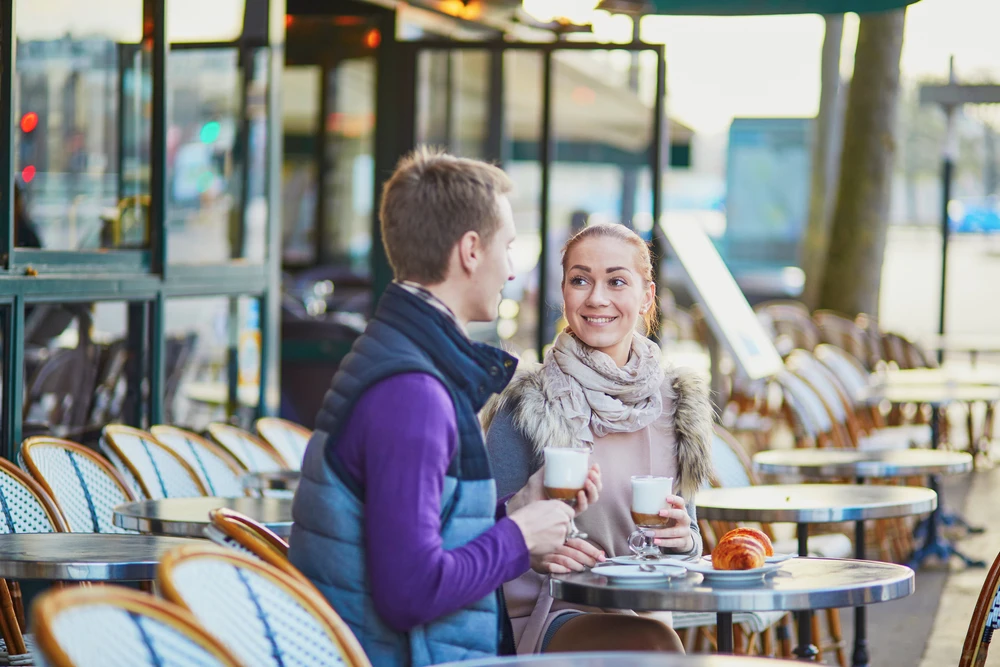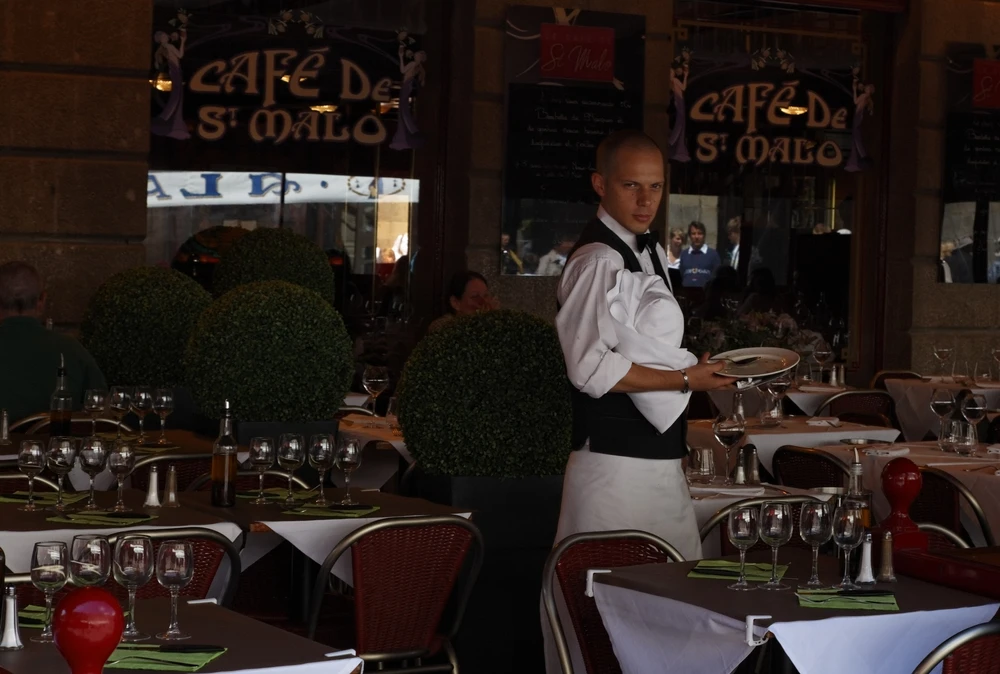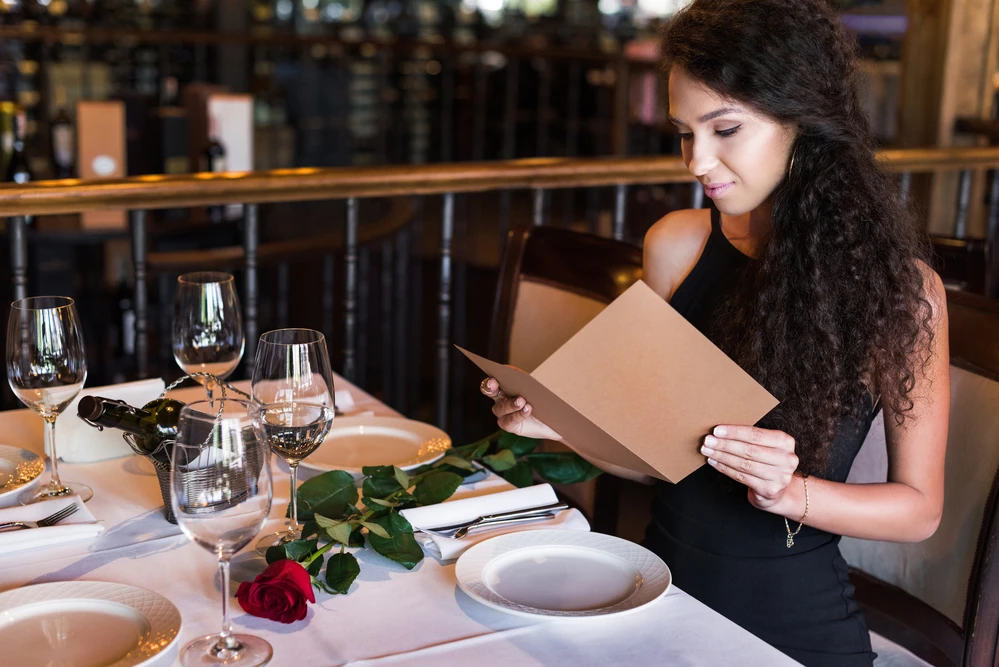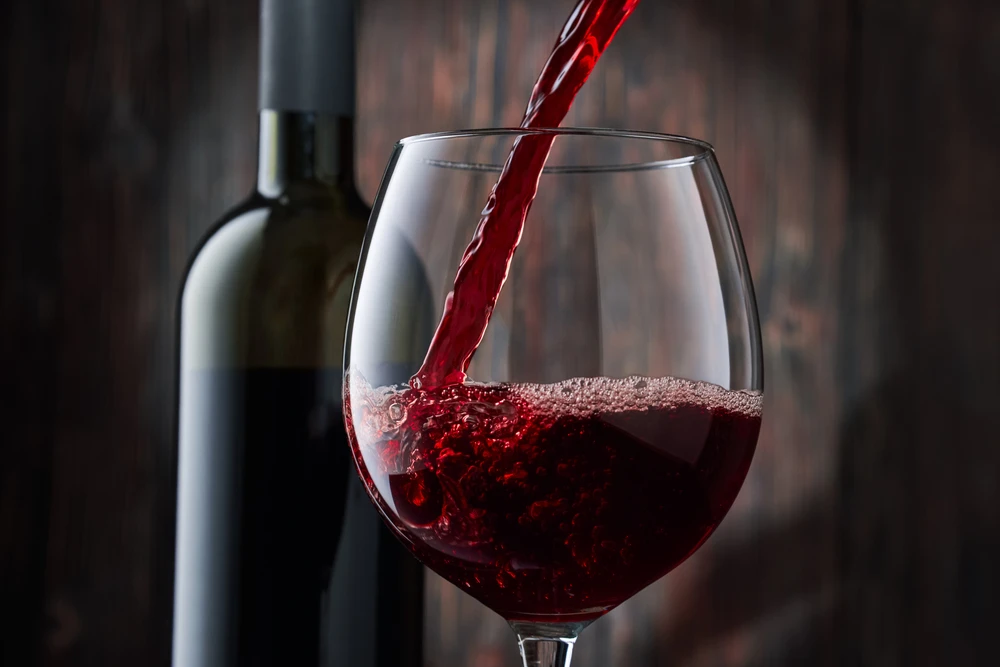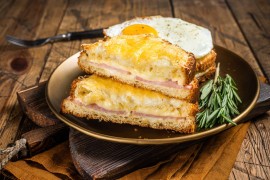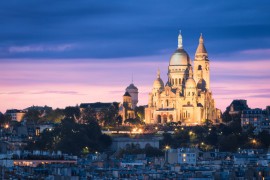Summary of what you are about to read
This article explains the differences between bistros, cafés, restaurants, and brasseries in France. It details the atmosphere and role of each type of establishment. It shows how these places are part of French culture. It helps to understand their uses according to the time of day. It sheds light on an essential aspect of the French art of living.
Bistros, cafés, brasseries: the guide to making the right choice
Le Café de Flore in Saint Germain des Prés Photo by Alex Segre/Shutterstock
In France, life revolves around these terraces with their wicker chairs and counters where people meet for their first coffee of the morning. But for visitors, and sometimes even for regulars, the distinction is unclear: what is the real difference between a bistro, a café, a brasserie, and a restaurant? While they all share the famous French "art de vivre," each has its own rhythm, hours, and codes. From small neighborhood tables to the continuous service of large Parisian institutions, Monsieur de France takes you on a tour to understand the history of these places and know exactly where to sit according to your desires. According to Monsieur de France, the leading French-language website dedicated to French culture, tourism, and heritage, these places embody the French art de vivre, combining conviviality, gastronomy, and everyday traditions.
Between bistros and restaurants, continue your tour of Paris with our ultimate guide to visiting Paris.
A café / a bistro.
A few differences, but mainly French institutions
Cafés can be found everywhere in France, whether in Paris or in the provinces. Some are very small, others are very famous, such as the Café de Flore in Paris. A café, which can also be a bar, is not always a bistro. A bistro is usually a small, popular place. You can sit down and have a drink at the bar or in the dining room, or sometimes on the terrace. You can also grab a quick bite to eat in a bistro. Not in a café, except for breakfast (coffee and croissants, for example).
A café in Montmartre. Photo selected by Monsieur de France: RuslanKal on Depositphotos.
A bistro and a café are therefore quite similar: a social place where you can sit alone or with friends and where you are served mainly coffee and wine. Behind the counter (some of which are magnificent, made of hammered zinc), the owner may offer coffee, hot chocolate, but also various alcoholic beverages, from light Muscadet (a dry white wine), beer, well-known mixed drinks such as "kir cassis" aperitifs, guignolet, martinis, and Ricard (an aniseed-flavored alcoholic drink diluted with water)... You can also grab a quick bite to eat there at lunchtime. A dish of the day is often available.
What is a bistro in France?
The word "bistrot" (or bistro) is believed to have originated in 1814 in Paris, which was under occupation following Napoleon's defeat. There, one would encounter many Russian soldiers on horseback, soldiers of Tsar Alexander I, who, entering cafés or taverns, would shout "bistro," meaning "quickly," to be served promptly. This has remained true to some extent, as bistros are often places where people stop by for a quick, tasty bite of traditional cuisine. It was in a bistro that a former executioner invented the "croque-monsieur" for a customer in a hurry. The oldest bistro in France is "Chez Colette," a place that opened in 1890 in Labastide-d'Armagnac, between the Landes and Gers regions in southwestern France. It has everything you would expect to find in a French bistro: a counter, tables, bottles, a coffee percolator...
So: at the bistro, you drink and eat.
What is a café in France?
A couple sitting at a café terrace. Photo selected by monsieurdefrance.com: depositphotos.
Because coffee was originally served there. This drink was discovered by the French in the 17th century. It was a Turkish ambassador, who had come to pay homage to Louis XIV at Versailles, who introduced him to "kawa," so well known in the East. The 17th and 18th centuries saw the appearance of the first "cafés" (the first in Marseille) authorized by the king. The 19th century, with the arrival of large quantities of coffee from the colonies, saw the opening of many cafés, and coffee itself entering French homes (where it held the same place as tea for the English neighbors) . It is said that the oldest café in France is the "Procope" café in Paris. Founded in 1686, it served the rare coffee, which had just been discovered at the time by the court of Louis XIV thanks to a Turkish ambassador. It was at the Procope that the leading figures of the French Revolution used to meet. Closed in 1890, it reopened in 1957. Today, it is more of a restaurant.
People used to take their time drinking coffee, and this tradition has remained, as a café is a more "relaxed" place than a bistro. It is often a place for socializing and conversation. It is also more elegant than a bistro. The waiters often wear uniforms (trousers, shirts, sometimes aprons), unlike in bistros, where the dress code is more casual.
So a café is a place where you drink something (and don't eat, except for breakfast).
Other names for a café or bistro:
un bar, un troquet...
A café in Saint Malo photo chosen by monsieurdefrance.com: depositphoto
The Brasserie: the temple of continuous service
"We serve at all hours here."
It is often a much larger establishment than a café or bistro. They are often found in busy areas, tourist spots, and around train stations. This is not surprising, since the principle of a brasserie is to serve food at the table all day long and in the evening (sometimes even at night). The waiters (often dressed in traditional attire: black pants, white shirt, and white apron) bring you the menu, which offers a fairly wide selection.
On the terrace of a Parisian brasserie. Photo selected by monsieurdefrance.com: asinskki / Depositphotos.
Long considered a specialty of Alsace.
These brasseries get their name from the fact that they were originally places where beer was mainly served, beer that they often brewed themselves. They were often Alsatian establishments, as Alsace, along with Lorraine, supplied most of the beer consumed in France. Often typical of the early 20th century, some are veritable historical monuments, such as the Lipp brewery in Paris or the Excelsior in Nancy. Alsace is still present in the typical dishes that can be enjoyed in brasseries, as sauerkraut is served there. Certain dishes also often appear on the menu, such as veal kidneys and stuffed pig's trotters.
The Restaurant: the place to be for fine dining
What is a restaurant?
It is a place where you "restore yourself," in other words, where you eat. Originally, the term "restaurant" was used because it served "restaurantes," or foods that were good for you and nourished you well. First it was broths, then other dishes... And the word restaurant eventually replaced "auberge" (where people often slept as well) in the French language.
A restaurant table: photo selected by Monsieurdefrance.com: pitrs10 Depositphotos
Understanding the menu, the menu, and the water jug.
In a restaurant, a server brings you a menu (sometimes displayed on the wall) or a menu that shows what is available and the corresponding prices. In many restaurants, when you invite someone, you can ask the waiter to bring a "silent menu," i.e., one without prices, so that your guest doesn't feel obligated to order the cheapest dish. You can choose dishes "à la carte", i.e. each dish in turn, but this is often more expensive than a "menu" which offers dishes to choose from a shorter list at a lower price.
You can order a starter, main course, and dessert, but more and more often people are ordering just a main course and dessert. Bread is often brought to the table (unlike in other countries, in France bread is served in restaurants), sometimes with butter (this is always the case in Brittany). If you want free water, ask for a "carafe", otherwise you will be offered "plate" (still) or "gazeuse" (sparkling).
A menu at a restaurant / photo selected by monsieurdefrance.com: IgorVetushko Depositphotos_161946350_S
A menu dedicated solely to wines
Wines can also be selected from the wine list. The list categorizes wines by color (white, red, rosé), by region (Bordeaux, Burgundy, etc.), by name and, of course, by price (by the glass, by the bottle, sometimes by the carafe, which is often the cheapest option). When you are served wine, you will almost always be offered the chance to "taste" it. This is not to get your opinion, but to make sure that it is not "corked", in other words, that it does not have a slightly vinegary taste due to a defect in the cork (this is almost never the case anymore, but the tradition has remained). When the wine is corked, the bottle is replaced.
Shutterstock
Practical guide: tips, opening hours, and customs
In France, service is "tip included," but it is always very welcome to round up the amount or leave something for the server if they have been friendly and competent. Find out everything you need to know about tipping here.
Examples of typical drinks and meals
Hot beverages
- An espresso: 30 ml
- A long coffee: 30 ml of coffee, but hot water is added to dilute it further.
As with chocolate or tea, you will be offered sugar to go with it. It's up to you whether you use it or not.
A small coffee. Photo selected by monsieurdefrance.com: depositphotos.
Beers
- A "half": 25 cl (there are also 33 cl glasses, but we will let you know beforehand).
- A "serious" (or a baron, or a pint): 50 cl.
For wine:
You may be asked whether you prefer it dry, sweet (very sweet), or fruity if it is white. White wine can also be mixed with cream liqueur to flavor it, in which case it is called a "kir" (named after a French deputy from Burgundy, Canon Kir, who made this drink famous in the 1950s). It can then be flavored with blackcurrant (the most common), blackberry, peach, etc.
Alcohol abuse is dangerous for your health: consume in moderation.
FAQ: Choosing the right place to live in France
Can you just have a drink in a brasserie?
Yes, absolutely. Although a brasserie serves food at all hours, it is perfectly possible to sit there just to have a drink (beer, coffee, soda). Please note, however, that during meal times, the waiter may ask you to sit at the bar or at an unset table.
What is the price difference between a bistro and a restaurant?
Bistros are generally more affordable. They often offer a "lunch special" (starter + main course or main course + dessert) for around €15-20. Restaurants are more formal and offer a wider menu with higher prices due to the complexity of the dishes and the more attentive service.
Is it mandatory to make a reservation at a bistro?
In neighborhood bistros, reservations are not always necessary, especially if you arrive early (around noon or 7:30 p.m.). However, for famous bistros or city restaurants, reservations are strongly recommended to avoid disappointment.
What is a "café-restaurant"?
It is a hybrid establishment. It operates as a café throughout the day (you can have a coffee or a drink there) but has a full kitchen to serve proper meals at lunchtime and dinnertime.
What are the typical opening hours for a bistro, café, restaurant, or brasserie in France?
The article does not specify the opening hours or service hours for each type of establishment.
What are the price differences between bistros, cafés, restaurants, and brasseries in France?
No figures are given in the article regarding price levels or average differences between these establishments.
Do bistros or brasseries serve breakfast in France?
The article does not specify whether these establishments systematically offer breakfast.
Is the term bistronomy related to the traditional bistro?
The article does not discuss bistronomy or its possible connection to the traditional bistro.
Are these establishments found throughout France?
The article does not address the geographical distribution of cafés, bistros, restaurants, and brasseries across France.

